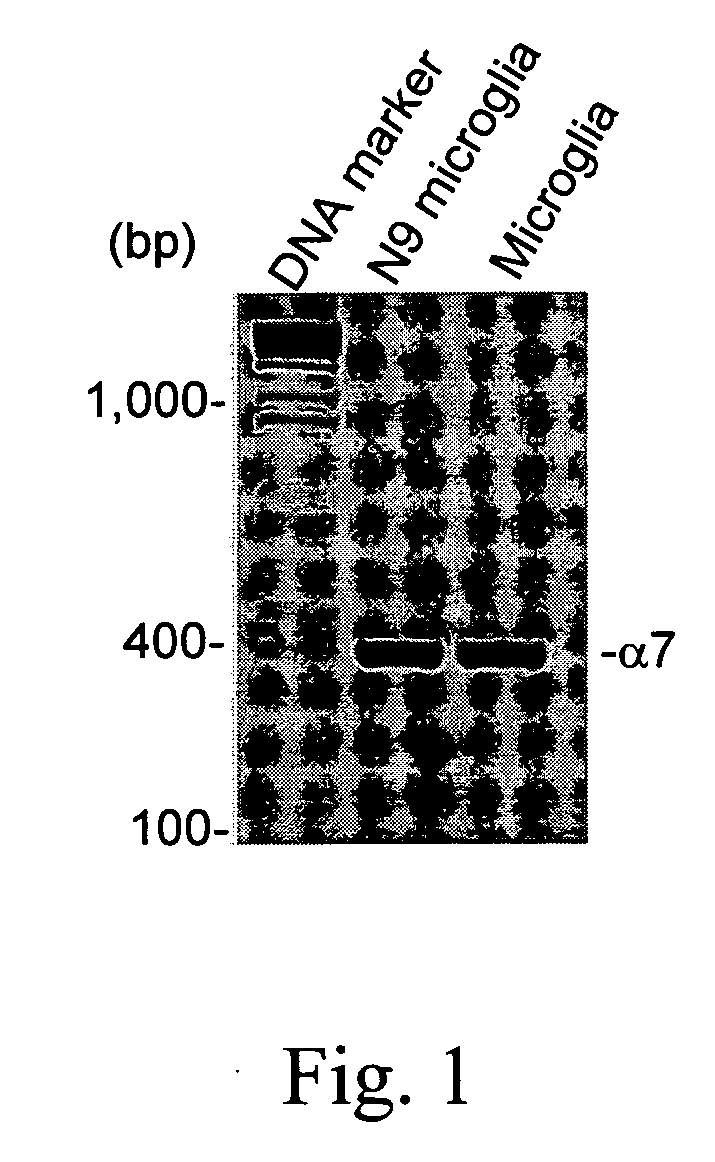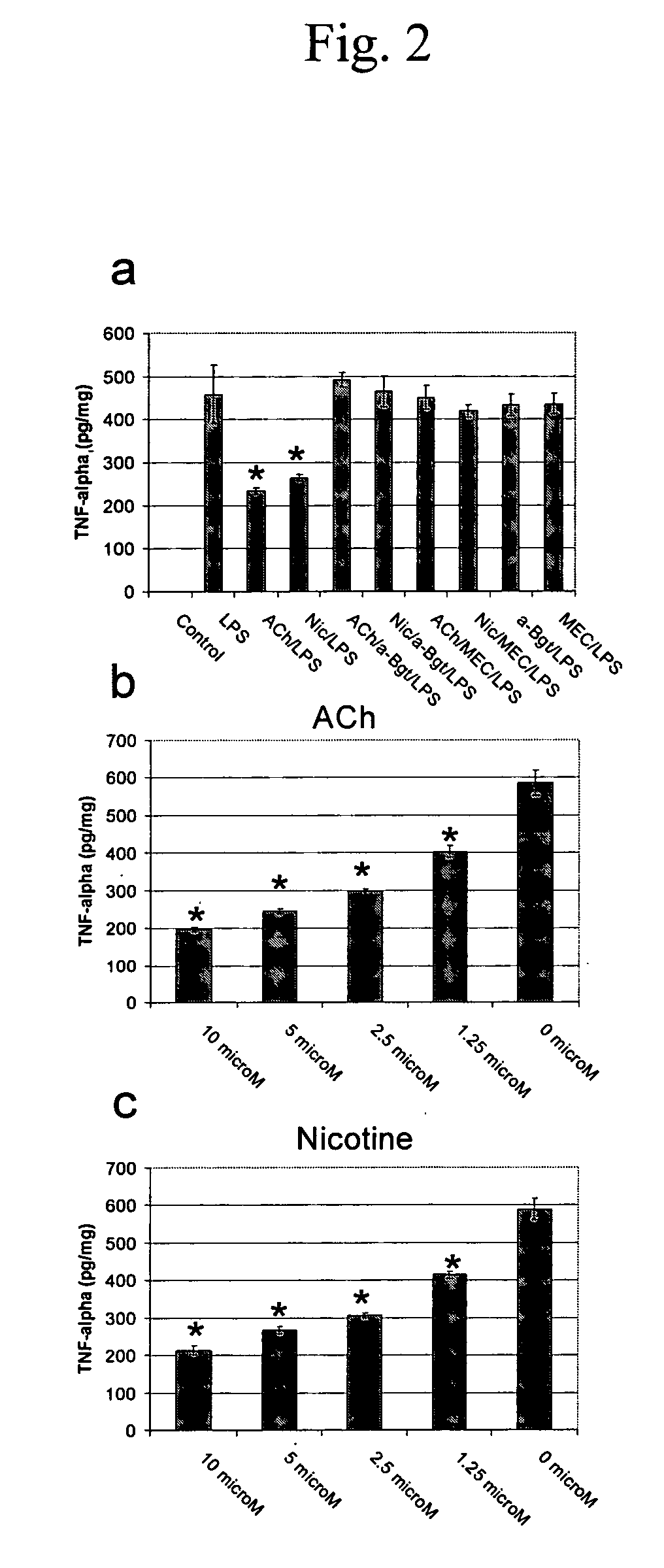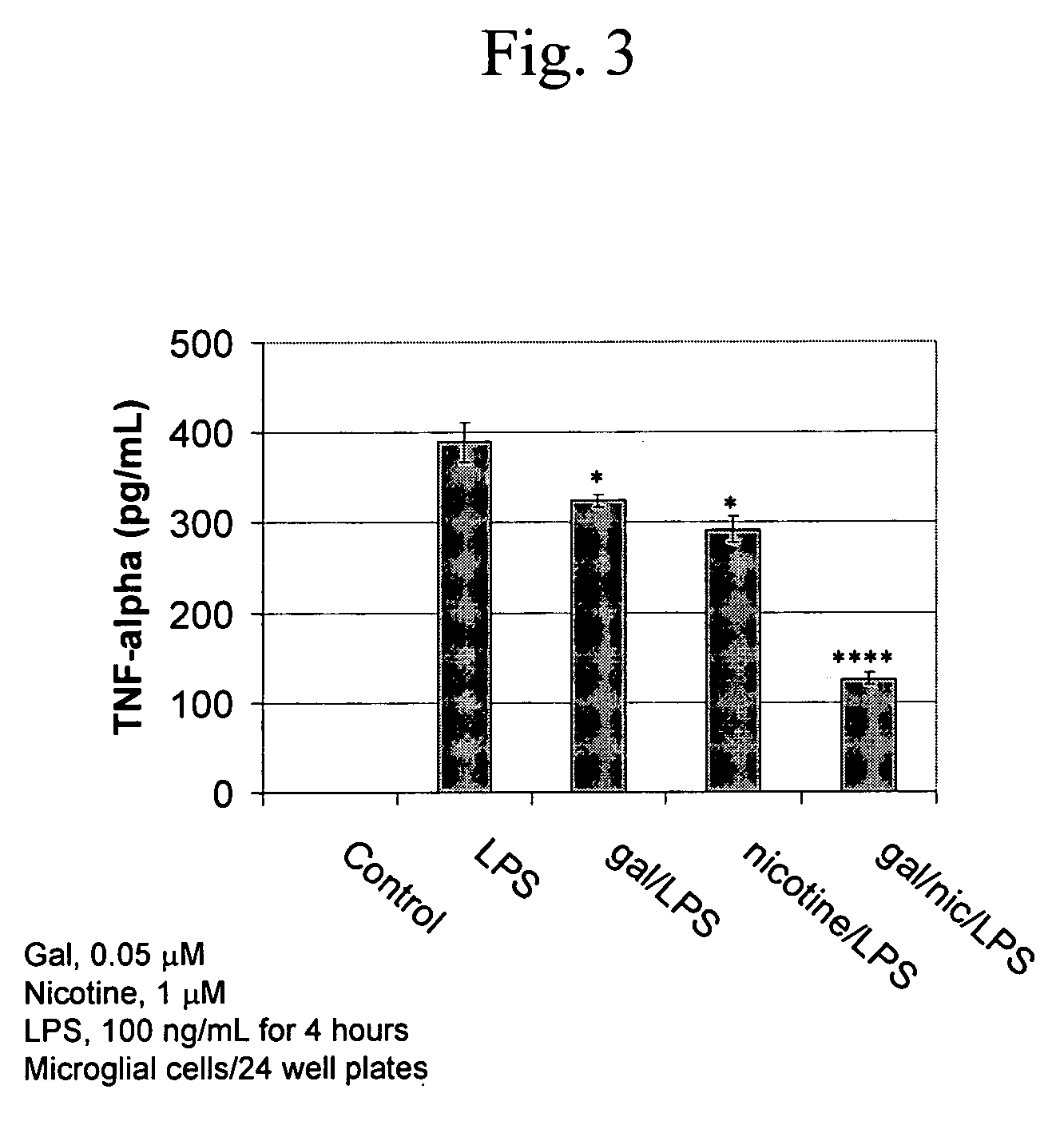Modulation of Microglial by Nicotinic Medications
- Summary
- Abstract
- Description
- Claims
- Application Information
AI Technical Summary
Benefits of technology
Problems solved by technology
Method used
Image
Examples
example i
[0038] The dose-response functions of galantamine, nicotine, and their combination on microglial cytokine release (TNF-α, IL-6, and IL-1β) induced by exposure to LPS can be characterized by the current invention. Secondary advantages of the present invention include a) the discovery of the expression of other nAChR subunits and their roles in microglia modulation and b) the discovery of previously unknown downstream processes such as protein kinase phosphorylation.
Nicotinic Acetyicholine Receptor A 7 Subunit is Expressed by Microglial Cells
[0039] In order to investigate whether nAChR {acute over (α)}7 subunit is expressed in cultured microglial cells, total RNA were isolated from N9 microglial cell line and primary cultured microglial cells for reverse transcriptase-polymerase chain reaction (RT-PCR) analysis. Murine primary culture microglial cells are isolated from mouse cerebral cortices (C57BL / 6 mice) and are grown in RPMI medium. As a result, nAChR α7 subunit mRNA is detecte...
example ii
[0052] Microglial modulation by nAChRs represents a novel physiological mechanism for the reported neuroprotective properties of nicotinic drugs in animal models of neurodegenerative disease. In the peripheral nervous system, a non-neuronal cholinergic system is strongly expressed within different components of the immune system and is likely involved in the regulation of host inflammation. An example has been provided by Wang et al. Nature 421, 384-388 (2003), who have shown that efferent vagus nerve stimulation attenuates the systemic inflammatory response to LPS in blood-borne macrophages and this is mediated by acetylcholine acting at α7 nAChRs (see Wang, supra). The present invention discloses a similar role for nicotine and galantamine at the same receptor; this time involved in regulation of inflammation in the brain. Microglia can serve both neurotrophic and neurotoxic functions in the brain and factors determining which function microglia carry out depend on a combination o...
PUM
| Property | Measurement | Unit |
|---|---|---|
| concentrations | aaaaa | aaaaa |
| pH | aaaaa | aaaaa |
| pH | aaaaa | aaaaa |
Abstract
Description
Claims
Application Information
 Login to View More
Login to View More - R&D
- Intellectual Property
- Life Sciences
- Materials
- Tech Scout
- Unparalleled Data Quality
- Higher Quality Content
- 60% Fewer Hallucinations
Browse by: Latest US Patents, China's latest patents, Technical Efficacy Thesaurus, Application Domain, Technology Topic, Popular Technical Reports.
© 2025 PatSnap. All rights reserved.Legal|Privacy policy|Modern Slavery Act Transparency Statement|Sitemap|About US| Contact US: help@patsnap.com



